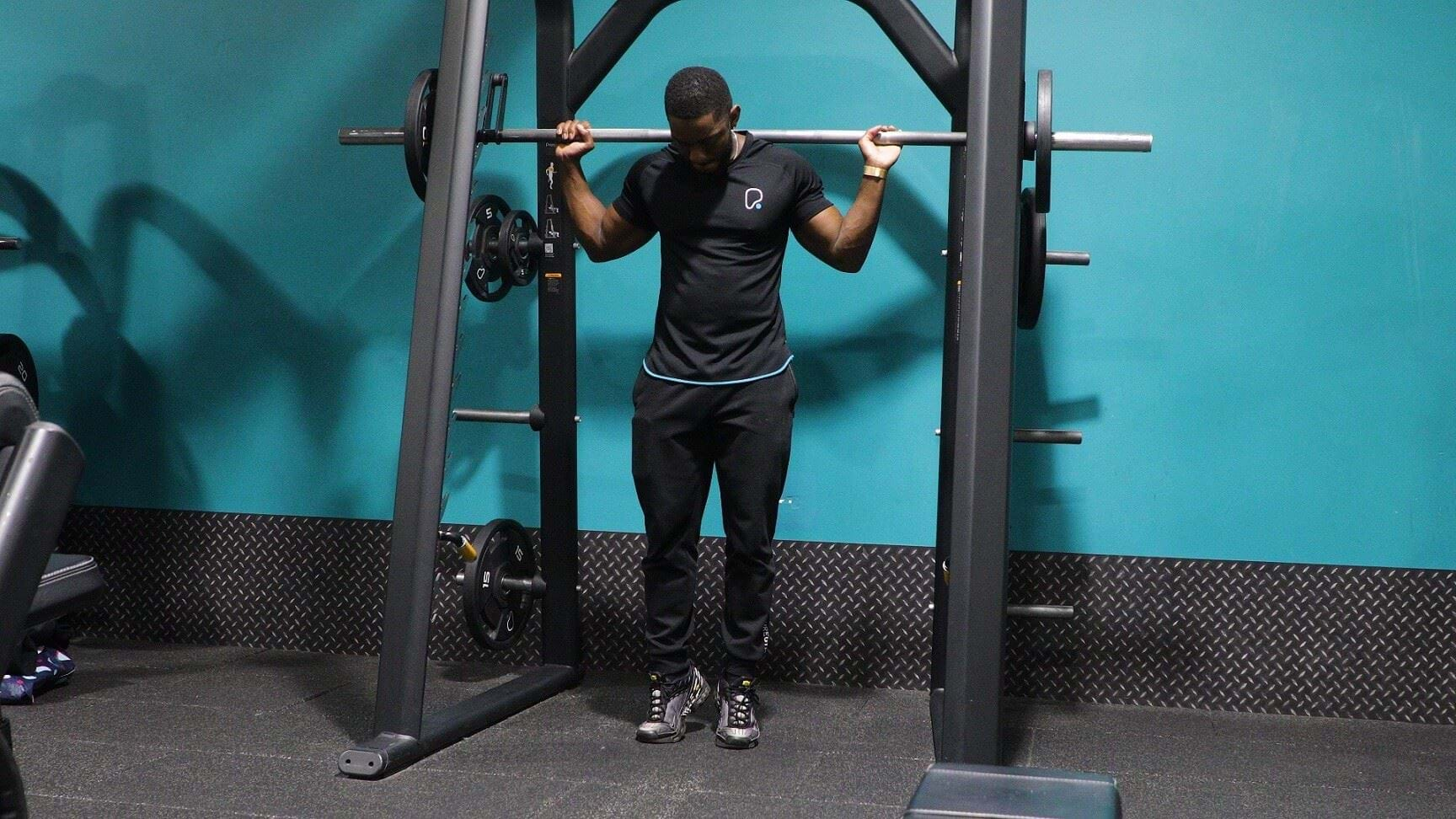Calf Raises
What Is A Calf Raise?

Standing calf raises are an isolation calf exercise that target the two muscles that make up the calves - the gastrocnemius and the soleus. The gastrocnemius is the larger calf muscle that gives the calf its shape and size, and the soleus sits underneath the gastrocnemius and attaches to the Achilles tendon. Standing calf raises place more tension on the gastrocnemius muscle, contributing to bigger and stronger calves while also improving stability.
The calf muscles have many functions, including running, jumping, pointing your feet, and flexing your ankles, and strengthening the calves can improve performance in sports and exercises like squats and lunges while reducing risk of injury. The calf muscles also help the heart to circulate blood throughout the body!
Calf exercises like the calf raise are a good way to target the calf muscles and encourage muscle growth. While these muscles are targeted during leg exercises like squats, deadlifts, and leg press variations, it is difficult to create enough of a training stimulus for the calves through compound exercises.
Standing calf raises are a simple and versatile calf exercise that can be done with a barbell, with dumbbells, or with bodyweight only. All you need is a stable raised surface (like a gym box or step) and weight.
Check out some other calf raise variations: Seated calf raises, single leg calf raises, leg press calf raises
Commonly Asked Questions On Calf Raises
Calf raises are an effective isolation exercise for building strength and size in the two muscles of the calves, the gastrocnemius muscle, and the soleus muscle. Calf strength helps reduce injury risk in the feet, ankles, and knees and translates into strength and power in many exercises including running, jumping, squatting, and deadlifting.
The calf muscles need adequate time to recover between training sessions, so don’t train calves every day. Aim to train calves 2-4 times per week. The calf muscles need a lot of stimulus to grow as they are exposed to a lot of stimulus each day while walking. Combine higher rep ranges such as 3 sets of 15-20 reps with higher loads such as 5 sets of 5 reps to sufficiently challenge the muscles.
Yes, calf raises will encourage muscle growth in the gastrocnemius muscle which is the largest muscle of the calf. This will contribute to the size and shape of your calves.
Calf Raises Tips
Stand on a sturdy platform like a gym step to allow greater range of motion during calf raises.
Use a high rep range like 15-20 reps to give the calf muscles sufficient stimulus to grow.
Alter your foot position to target the calf muscles from different angles. Point your toes inwards slightly to work the inner calf muscles, and turn your toes outwards to work the outer calf muscles.
Stretch your calf muscles after doing calf raises to increase flexibility and reduce the risk of injury in the muscles and tendons of the calf and ankles.
How To Do Calf Raises
Set up a step or low box underneath the bar (if you are using a barbell or Smith machine). If you are using dumbbells, place them on the floor behind the step.
Pick up your dumbbells or rest the barbell or Smith machine bar across the top of your back like you would for a squat.
Stand with your feet hip-width apart on the edge of a step, with both heels hanging off the back of the step.
Lower both heels until you feel a stretch in the calves, then press into the balls of your feet to lift onto your toes.
Pause at the top of the rep, focusing on squeezing your calves.
Look straight ahead and engage your core through the movement to keep your upper body upright.
If you’re not sure if any of the above exercises are suitable for you, please consult your doctor before you start it. Need guidance on how to perform the exercise? Ask a personal trainer at your gym.